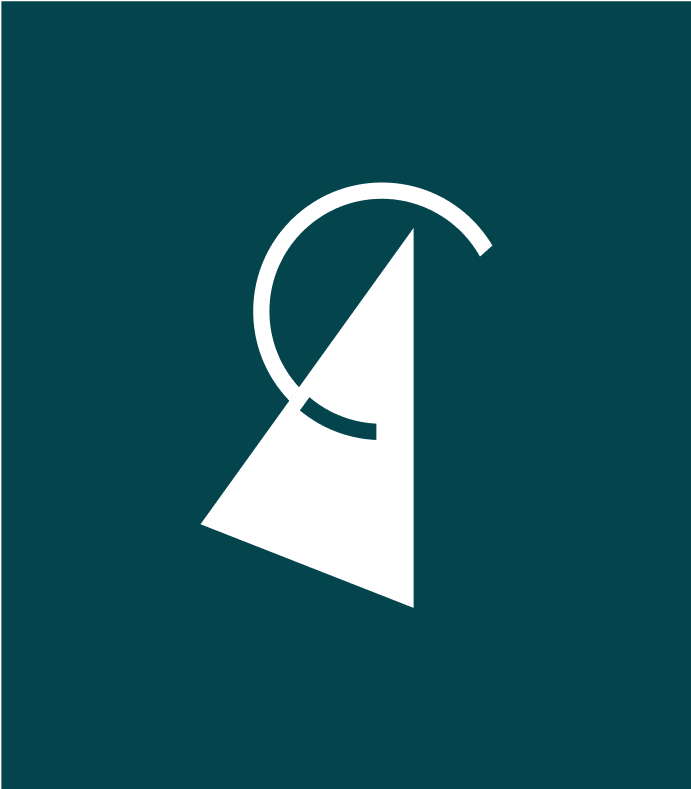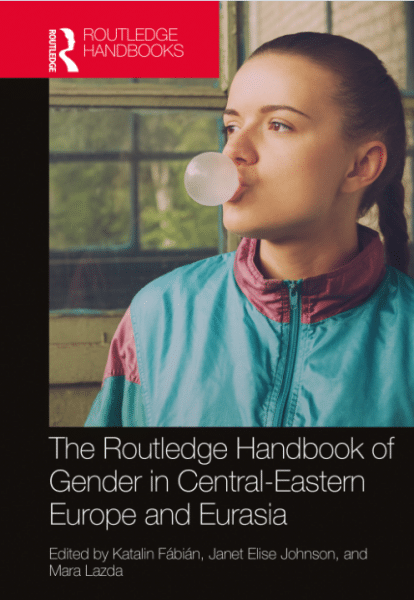
Mara Lazda, Katalin Fábián, and Janet Elise Johnson
Edited by Katalin Fábián, Janet Elise Johnson, and Mara Lazda
When did you first develop an interest in gender and Slavic, East European, and Eurasian Studies?
Janet: My interest in Slavic, East European, and Eurasian Studies has always been tied up with current events and gender. Watching Germans tear down the Berlin Wall from afar in high school, I wanted to go to the Soviet Union to witness the transformation, as well as to understand what had been framed as the “evil empire.” I got lucky and received funding to go to a space camp in the Soviet Union during the revolutionary summer of 1991. And, while I expected things to be different from the United States, I hadn’t expected to hear misgivings about women’s bodies so often and so explicitly. I was repeatedly told not to sit on cement as this would put my fertility at risk. Our woman intourist minder told me I couldn’t swim in the Black Sea if I had my period or else, they would have to close down the Black Sea. Despite the Soviet history of women in space, I was told by a male cosmonaut that women couldn’t be good astronauts because they menstruated. Before hearing about Slavenka Drakulic articulating the gendered problems of state socialism to NY socialists by waving tampons and menstrual pads, I discovered that women were using rags, and the condoms I found were so thick as to be virtually unusable. These later concerns were part of a larger lack of products that make everyday life comfortable—and I’ve come around to reusable menstrual products — but underneath these realities was a different kind of misogyny that I—as a US-born white woman—hadn’t expected to exist in a country ruled by a communist party. This trip led me to learn Russian, to do fieldwork in Russia and elsewhere in the region, to study both political science and gender studies, and to focus my research and writing on gender-related problems and women’s activism.
Katalin: To comprehend and contextualize the diverse and often tragic experiences of my parents’ generation was my main initial incentive to study history, sociology, and economics in Hungary during the late 1980s. My mom worked full time since she was 18 until the regime change in 1990 entirely eradicated the large company where she worked for all her life. Today, one cannot find a trace of hundreds of employees’ decades of dedication in the provincial, radically industrialized town in Hungary where I grew up. My mother’s experiences—through what she shared and what I interpreted/witnessed, along with the personal and professional trajectories of so many other female friends and relatives have become both an inspiration and challenge to me. My father, a Holocaust survivor, was taken as a 17-year-old lad from Trenčín, Slovakia to forced labor and then extermination camps. The “elephant in the room” of his extreme trauma and loss of his family and home were ever-present but rarely discussed. He told me to learn languages—because this is what possibly saved him. During my university studies in Budapest, I actively participated with the then liberal FIDESZ (Fidesz – Hungarian Civic Alliance). Activism was as much of my calling as academia, but the latter won with a focus on political science and work in higher education in the US.
Mara: My connection to the region is rooted in my own history, as both my father and mother, with their families, fled Latvia after World War II. Like many second-generation immigrant kids, I attended Latvian heritage school on Saturdays and camps in the summer. But in my Cold War childhood, Latvia was something of a far-away, unattainable dreamland. My first direct experience with the region came in 1983, when my family had the opportunity to spend a semester abroad in Krakow. I called Dom Studencki Piast home, learned my way around Sukiennice Market Square, and attended a Polish elementary school–to my considerable dismay as I had no knowledge of the language at first. But even as a young teenager, I sensed—and was intrigued by—the tension and promise of this time, listening to adults speak about Solidarity, learning to recognize the symbols of resistance in everyday life. I fell in love with history, travel, and languages. Perhaps because my introduction to the region was so personal, based on everyday experiences, oral history methodologies have been central to my research as a historian. It was in listening to interviewees on my first research trip to Latvia in 1996 that I was struck by the way in which their narratives were gendered. For both men and women, for example, their recollection of the experience of Soviet deportation centered on the violation of intimate spaces, of the dissolution of the family. Gendered relationships and gendered expectations were frames through which they both understood and negotiated power structures.
What is your current research/work project?

Gender is always one of the main axes around which politics, economics, and societies are organized, but communist-party regimes in CEE&E explicitly politicized gender by raising and ostensibly solving the “woman question.” As Soviet power collapsed, state-defined gender ideologies transformed, making it even more obvious that not only social norms and economic conditions construct gender, but that gender is a structure of power shaped by distinct historical contexts. As the authors in the Handbook develop, we hold that gender represents systems of difference, privilege, and oppression that affect us all—women, men, and those who do not fit within these binary categories—and is created, not primarily through individual acts of sexism but through political, economic, and social processes, lived and inscribed into laws, informal norms, and practices. The Handbook demonstrates how gender has become politicized and central to the various regimes over the last century and a half in CEE&E.
How do you think collaborating with other professionals/ASEEES members affect this project?
From the very initial stages until publication, this project was collaborative. This is a project that required the three of us to work together intensely and to complement each of our strengths to try to incorporate the diversities of the region and the multidisciplinarity of the field. As part of the project and taking reflexivity seriously, we considered whether it is still useful to think about a region and what we should call a field. We also have different relationships to CEE&E, with one of us born there, one of us a second-generation immigrant, and one with no known heritage from the region. At the same time, we share coming from outside of the “Research I” universities, with one of us at a liberal arts college and the other two at an urban public university, including a community college. This multipositionality, we think, enabled us to create a rich and thoughtful book that considers ideologies, lived experiences, movements, and public policy issues, while keeping in mind but de-centering Russia as much as possible, challenging our disciplinary training, and thinking beyond the higher-education-privilege. Working together, with weekly or biweekly calls over the course of two years–including through Janet’s fellowship in Germany as the pandemic hit–our collaboration also was a source of solace and supported us in continuing to do intellectual work amidst all of the chaos, fear, and increased responsibilities on us as teachers and caregivers.
The project was also collaborative in the sense that we extensively engaged with 51 chapters with more than 60 authors who wrote multiple drafts that all three of us read and considered in detail each time. These authors brought original research, expertise on new subjects, different intellectual affinities, such as postcolonialism, and training in other disciplines, such as sociology, anthropology, gender studies, disability studies, social work, legal studies, peace studies, and public health. They also brought even more diversity into the project, both regarding their location and relations to CEE&E, and also as people with their own complicated lives, something often erased from our discussions of intellectual work. This was a beautifully human project.
What are your recommendations to have successful collaboration on research?
Finding the right people to collaborate with is indeed the most important. Colleagues become friends when, as committed to the project as you are and caring similarly about context and complexity, they also push you in different ways, combining in flexible proportions some perfectionism, but also some “good enough”-ism. Those who know each other well enough and care enough to pick up the slack from another who was underwater or to renegotiate deadlines. The logistics include using a reliably good project management system as a tool to produce an effective and flexible division of labor (though our app went out of commission half-way through) and hurdling through the ever-present tribulations of technology such as Skype and Google drive. More institutional support for this kind of research would be so helpful: some of our institutions refuse to see this work as real enough for tenure and promotion. Though we got a little research and editing assistance from students who had institutional funding, all of our institutions refused to give us funding to support this publication. This is something ASEEES could do, especially for those in under-resourced institutions here and abroad.
How has your ASEEES Membership helped you in your academic and professional careers?
ASEEES has been an important part of our intellectual lives, with the annual conference our favorite outlet for intellectual engagement. Mara and Janet crossed paths in graduate school at Indiana University, Bloomington, but came to know each other in the 2010s through the Gender and Transformation Workshop at New York University, which we now coordinate together and at which Katalin had presented several times over the years. Janet and Katalin had met years ago at a panel and had kept in touch through the annual meetings for ASEEES and APSA, leading to collaborative work on a book on domestic violence in the region. Mara and Katalin first met at ASEEES in Philadelphia in 2015, after finding common interest in the domestic violence politics of NGOs in the Baltic states. It is through ASEEES that we collaborated in person: a restaurant discussion between the three of us at the 2017 annual convention, an after-conference planning meeting with half of the authors in 2018, and two panels on the book in progress in 2019—and two more panels on the book during the virtual gathering in 2020. We hope to celebrate in person at ASEEES 2021.